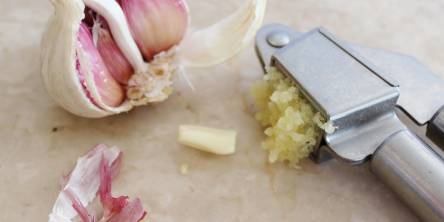How Large Scale Lettuce Farms First Arrived In India
Just a bite into one’s favourite McVeggie Burger at a McDonald’s restaurant, and you may wonder how the lettuce tastes so fresh and juicy, as if it’s just been brought from a farm on a cool hill station. You would not be wrong in your feeling of surprise, as the lettuce is not just any lettuce but the Iceberg variety of lettuce, which has arrived all the way from the cool Nilgiris mountains of South India.
The year was 1996 when McDonalds’s approached Ooty Farms and Orchards based in the Nilgiris, (today, the company isn known by the name Green Earth Fresh Produce), to get the regular supply of top quality iceberg lettuce to the food chain. Later, two more companies joined McDonald’s as suppliers of that particular variety of lettuce.
What began as a mere 100 tonnes of lettuce supply available only for half the year, the supply of this crucial ingredient in a McVeggie burger has today gone up to almost 1,250 tonnes per year, with the chain of McDonald’s restaurants in India (South and West) having increased to more than 400 outlets. In effect, the demand for the top-quality lettuce grew by 25 per cent, year-on-year.
So, what makes the Iceberg lettuce thrive in the Nilgiris? The Nilgiris’ soil and climate lend to the Iceberg lettuce its unique crunchy texture and taste that you love inside your burger.
That’s how India’s first large-scale lettuce farms were created.
Today, Green Earth Fresh Produce is run by a first-generation entrepreneur C Magesh Kumar. Although Magesh Kumar was a Maths graduate, he soon realised that his true love was horticulture. After several experiments with various vegetables and fruits, Magesh Kumar zeroed-in on lettuce with the McDonald’s family.
He recalls, “I travelled to meet the Big Mac guys and bag the deal. The challenging part was in convincing them that we could supply them the quality produce that they needed.” He began with only 10 acres, but today owns 100 acres, spread out at four places – Kookalthorai, Thoraihatty, Chinna Coonoor and Coonoor. He employs 100-odd farmers on contract basis to cultivate the lettuce.
Is it any wonder that Green Earth Fresh Produce is able to produce 1,250 tonnes of Iceberg lettuce each year. Ninety percent of the quantity produced is supplied to McDonalds restaurants.
This is also a great example of localization initiative undertaken by McDonald’s.
All about Iceberg Lettuce
Besides being a layer in McDonald’s burgers, the Iceberg lettuce can be used in various other recipes as well. It can complement any salad, be it fruit, vegetable, chicken or seafood, to add great “crunch” value. Then, even sandwiches and soups can benefit from the presence of an Iceberg Lettuce.
Iceberg lettuce is wrongly considered to have little nutritional value, but is actually an excellent source of potassium, manganese, iron, calcium, magnesium and phosphorous, besides sodium, copper and zinc. It is also an excellent source of vitamins A, K and C, B6 and B9 (folate) besides thiamin.
Being rich in vitamin A makes it valuable for healthy eyes, besides the growth and development of bones and the strengthening of the immune system. Being a good source of folate, it helps pregnant women to prevent birth defects, and also helps in fighting cancer, heart disease and strokes. Containing vitamin K, it helps normal blood clotting.
As the Iceberg lettuce mostly contains water, and is only 14 calories per 100 grams, comprising dietary fiber, besides being low in sodium and very low in saturated fat and cholesterol, it also aids weight loss.
If buying some Iceberg Lettuce yourself from the market, make sure to always select fresh Ice berg lettuce, with crisp leaves. The next thing to do is to wash it well. Lastly, remember to store it in a cool place.
Similar Articles
Learn how garlic drives the food processing industry, from raw bulbs to high value-added products with major economic and culinary impact.
When you think about ice, you might imagine the small cubes in your drink or the crushed ice in a smoothie.
Indulge in fine dining at home or events with a luxury private chef, offering tailored gourmet menus, premium ingredients, and flawless service.
Upgrade your outdoor kitchen with these 10 must-have culinary tools—from griddles to thermometers—for flawless, flavorful alfresco cooking every time.
A great dining experience isn’t just about the food—it’s also about the drinks that complement each dish.
Discover the world’s largest black caviar producers, from Europe to China, and learn how to choose premium, sustainable sturgeon roe for a luxurious culinary experience.
Who says you need deep pockets to enjoy mouth-watering meals? Eating like royalty doesn’t mean booking fancy restaurants or spending a fortune on gourmet ingredients
Learn how modern cafeterias balance taste and nutrition with fresh, flavorful, and healthy meal options tailored to diverse dietary needs and employee well-being.
Learn how digital menu boards revolutionize restaurants with dynamic content, eco-friendly updates, enhanced customer experiences, and streamlined operations.









